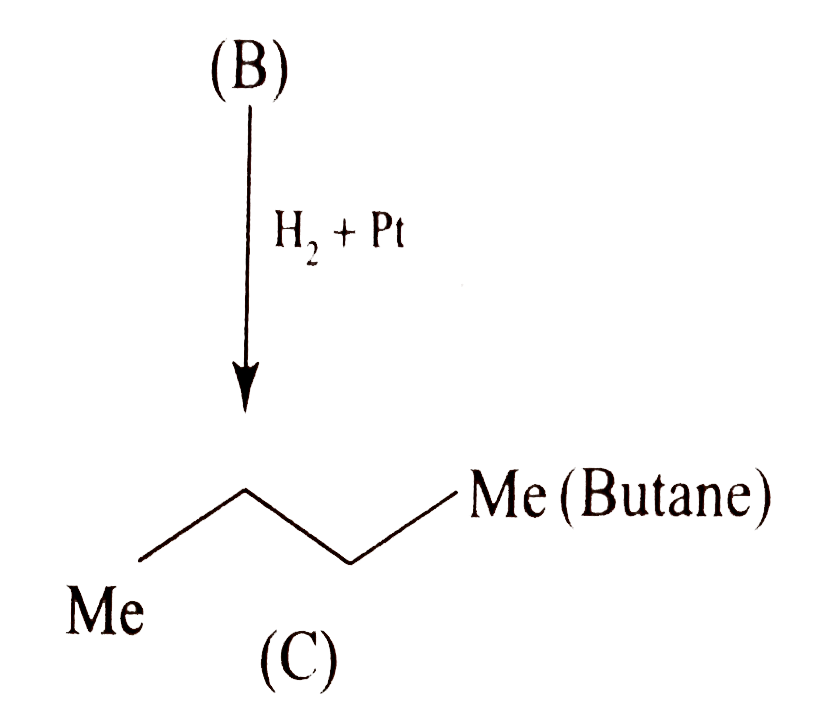A compound (A) is a sodium salt of dibasic acid and on electrolysis gives a gas (B), gas CO2 at anode, and H2(g) at cathode.
Gas (B) does not give any test for unsaturation, i.e., it does not decolourise Br2 water solution and aqueous KMnO4 solution.
Gas (B) on reaction with (H2+Pt) at room temperature does not react but at 120∘C, gas (B) gives butane. Identfy (A) and (B)
Video Solution
Text Solution
(A) should be a 6−C−atom because (B) on reduction at 120∘C gives butane [4C atoms of butane +2(−COOH) group ].
(A) can be :
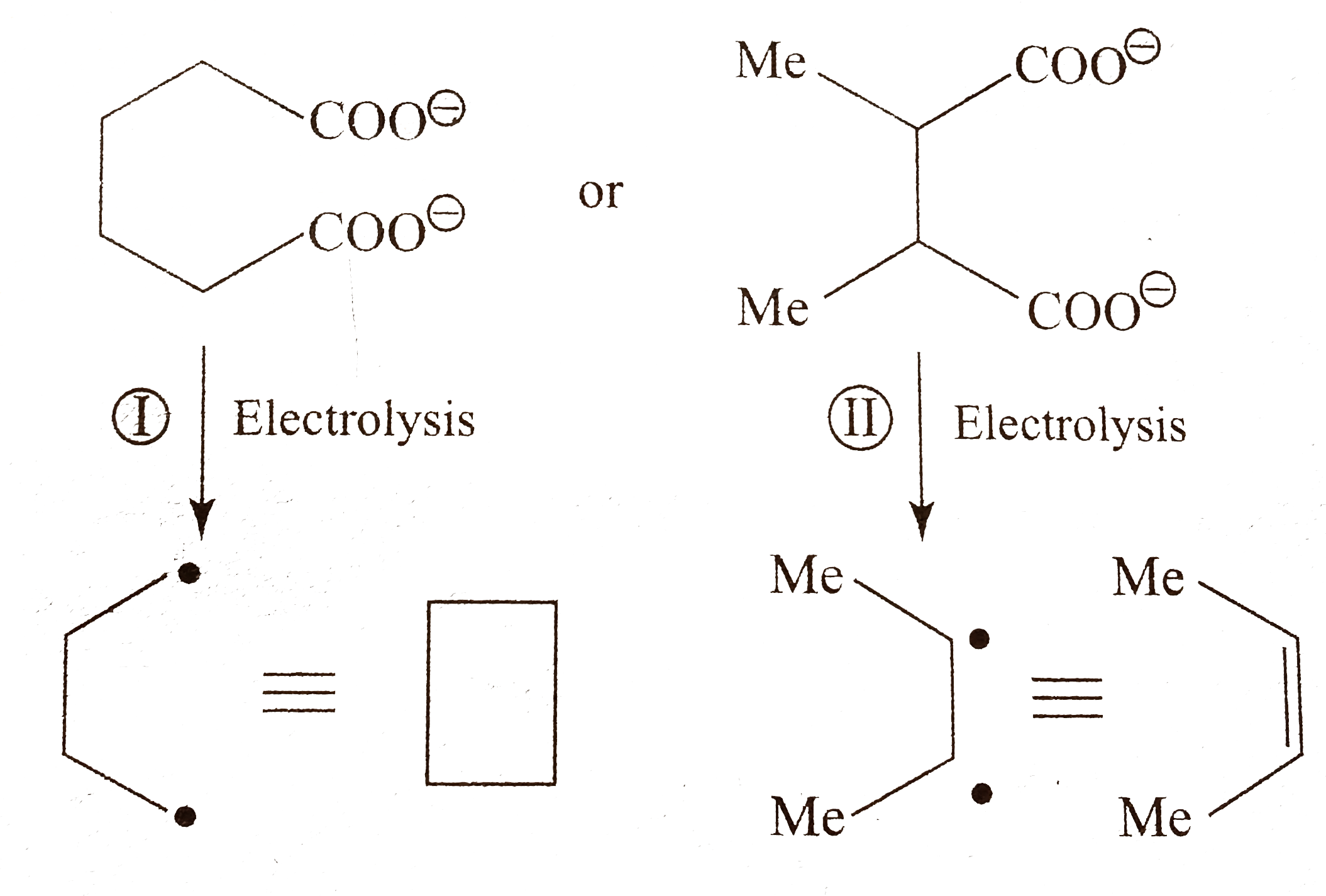
(A) cannot be (II) because the product obtained by this will be alkene that gives test for unsaturation, but according to the problem, (B) does not give this test. So (A) is (I)
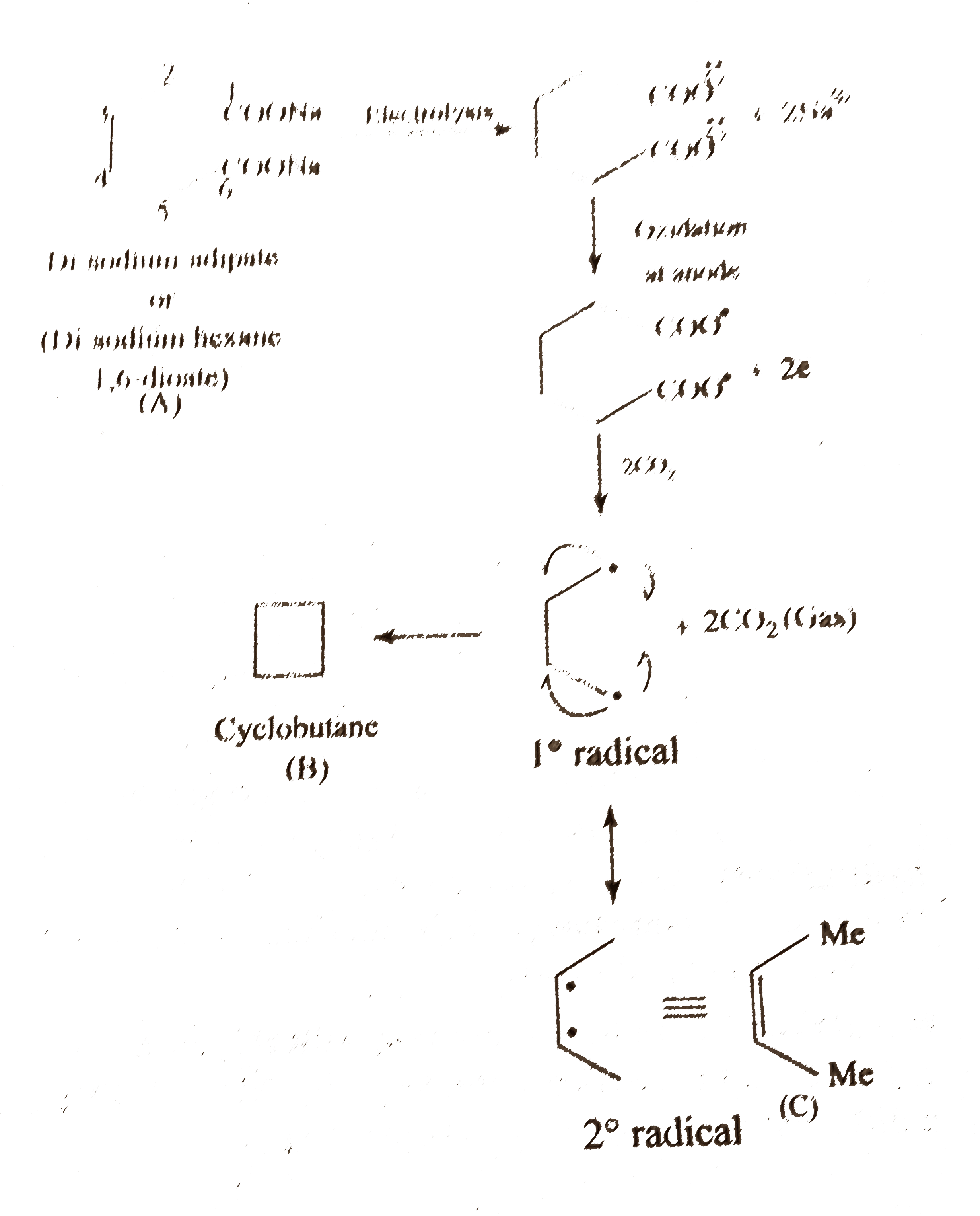
The product can be (C) also, due to the stabilisation of 1∘ radical to 2∘ radical, but one has to proceed according to the problem given .
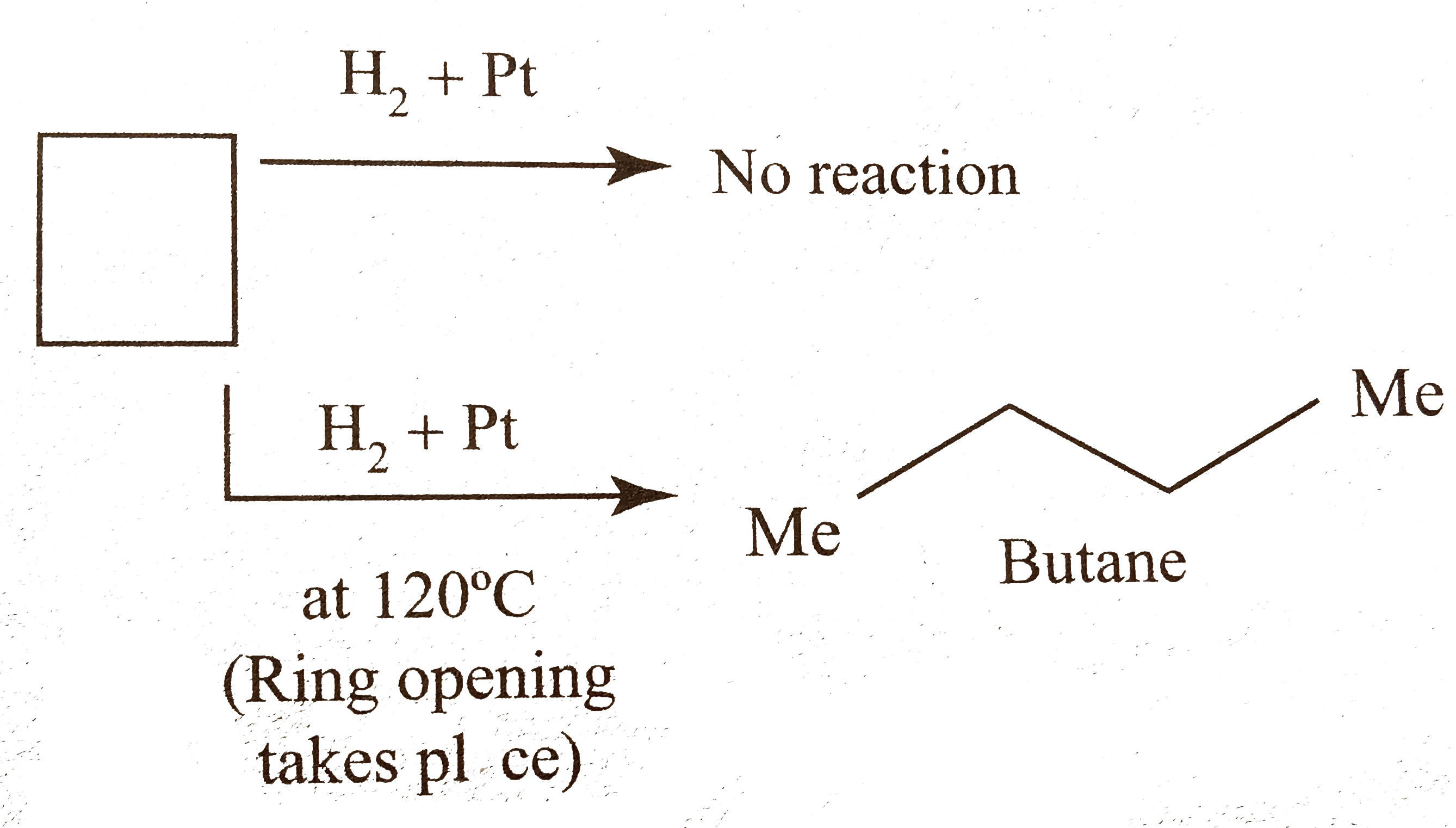
|
Topper's Solved these Questions
- ALKENES AND ALKADIENESBOOK - CENGAGE CHEMISTRY ENGLISHCHAPTER - ALKENES AND ALKADIENESEXERCISE - EXERCISES
29 Videos
- ALKENES AND ALKADIENESBOOK - CENGAGE CHEMISTRY ENGLISHCHAPTER - ALKENES AND ALKADIENESEXERCISE - linked Comprehension Type
38 Videos
- ALKENES AND ALKADIENESBOOK - CENGAGE CHEMISTRY ENGLISHCHAPTER - ALKENES AND ALKADIENESEXERCISE - Single correct Answer
14 Videos
- ALKANES AND CYCLOALKANESBOOK - CENGAGE CHEMISTRY ENGLISHCHAPTER - ALKANES AND CYCLOALKANESEXERCISE - Archives
13 Videos
- ALKYNESBOOK - CENGAGE CHEMISTRY ENGLISHCHAPTER - ALKYNESEXERCISE - Exercises (Archives - Analytical and Desriptive Type)
4 Videos
Similar Questions
Knowledge Check
An alcohol (A) on dehyration gives (B), which on ozonolysis gives acetone and fromaldehyde. (B) decolourises alkaline KMnO4 solution but (A) does not. (A) and (B) are respectively :
ACH3CH2CH2CH2OHandCH3CH2CH=CH2BCH2CH2−CH∣OH−CH3andCH3−CH=CH−CH3C(CH3)3C−OHand(CH3)2C=CH2DCH3−CH2−CH∣OH−CH3and(CH3)2C=CH2An alcohol (A) on dehydration gives (B), which on ozonolysis gives acetone and formaldehyde. (B) decolourises alkaline KMnO4 solution but (A) does not. (A) and (B) are respectively:
ACH3CH2CH2CH2OHandCH2CH2CH=CH2BCH2CH2−C∣OHH−CH2andCH2−CH=CH−CH2C(CH3)3C−OHand(CH3)2C=CH2D(CH3)3CHCH2−OHand(CH3)2C=CH2
Name the gas that decolourises acidified KMnO4 solution.
View SolutionWhy Zn reacts with dilute H2SO4 to give H2 gas but Cu does not ?
View SolutionZinc on reaction with NaOH gives a salt (A) along with a gas (B).
(A) on reaction with H2S gas gives a white precipitate (C ).
Identify (A), (B) and (C ).
View Solution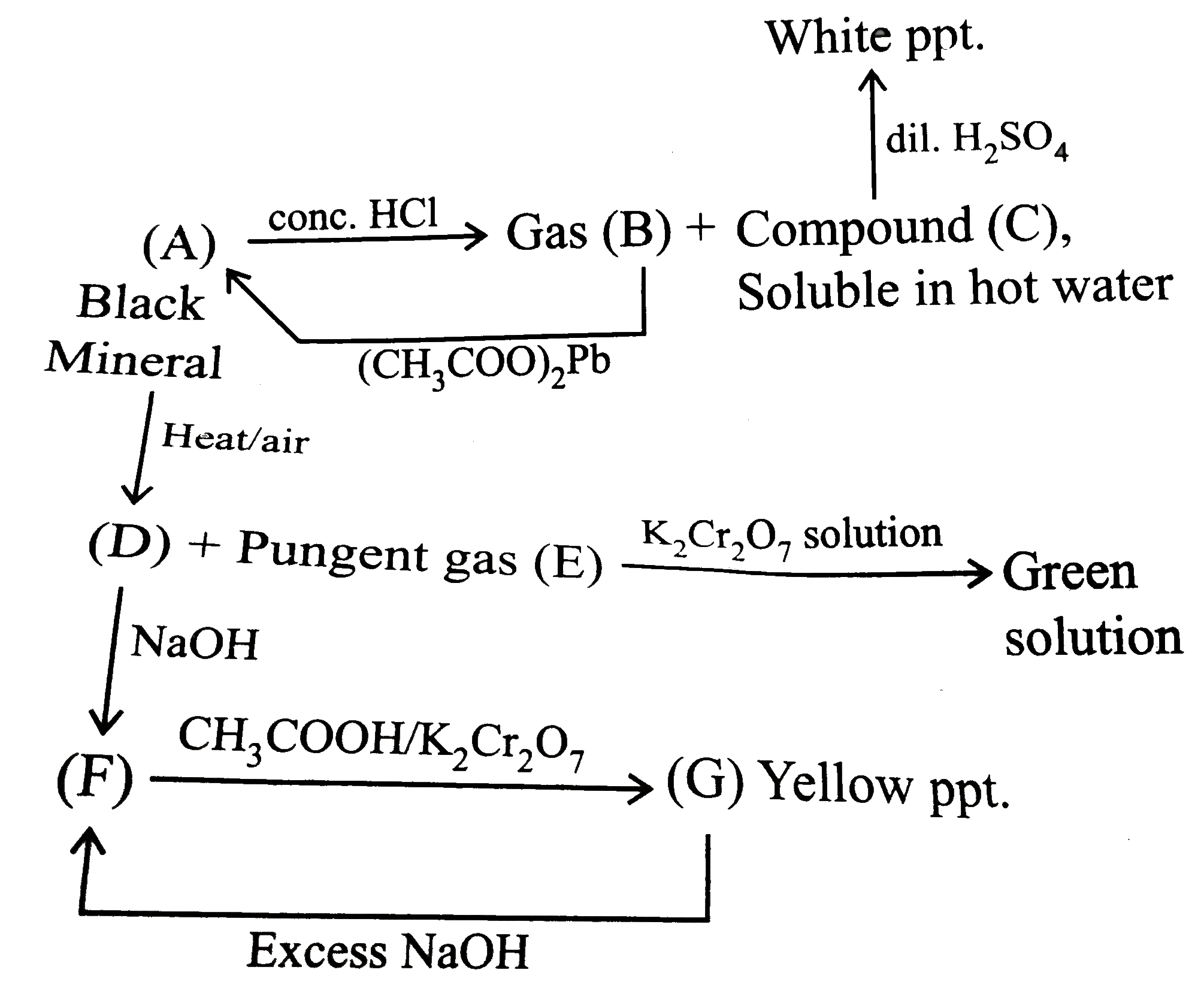
Gas (B) on passing through CaSO4 solution will give
View Solution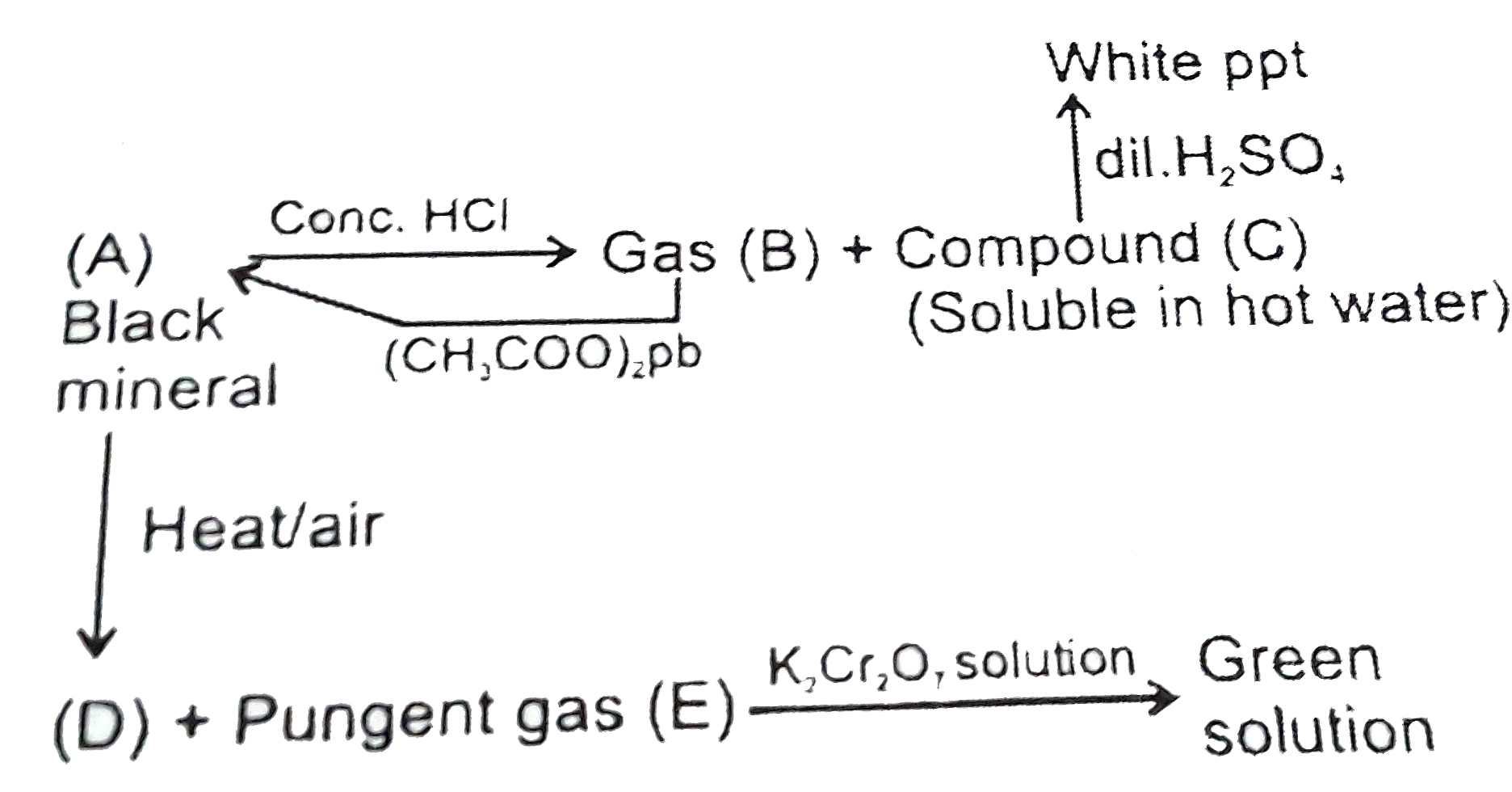
Gas (B) on passing through cadmium acetate solution will give :
View SolutionAn inorganic iodide (A) on heating with a solution of KOH gives a gas (B) and a solution of a compound. The gas (B) on ignition in air gives a compound (C ) and water. Copper sulphate is finally reduced to the metal on passing (B) through its solution.
What is true about gas (B) and compound (C ) ?
View Solution


